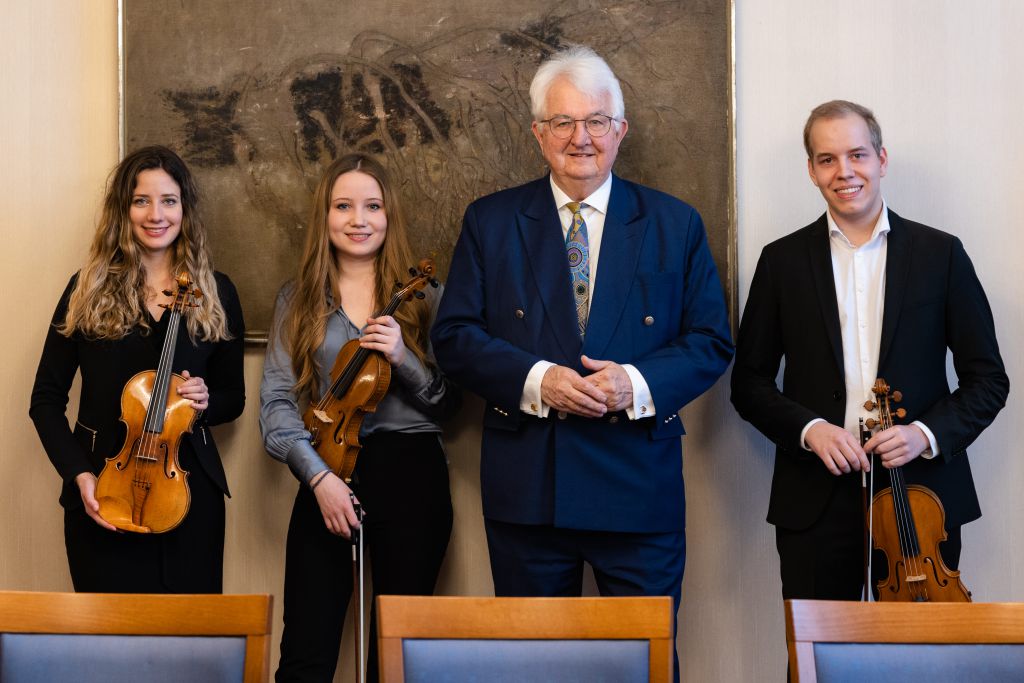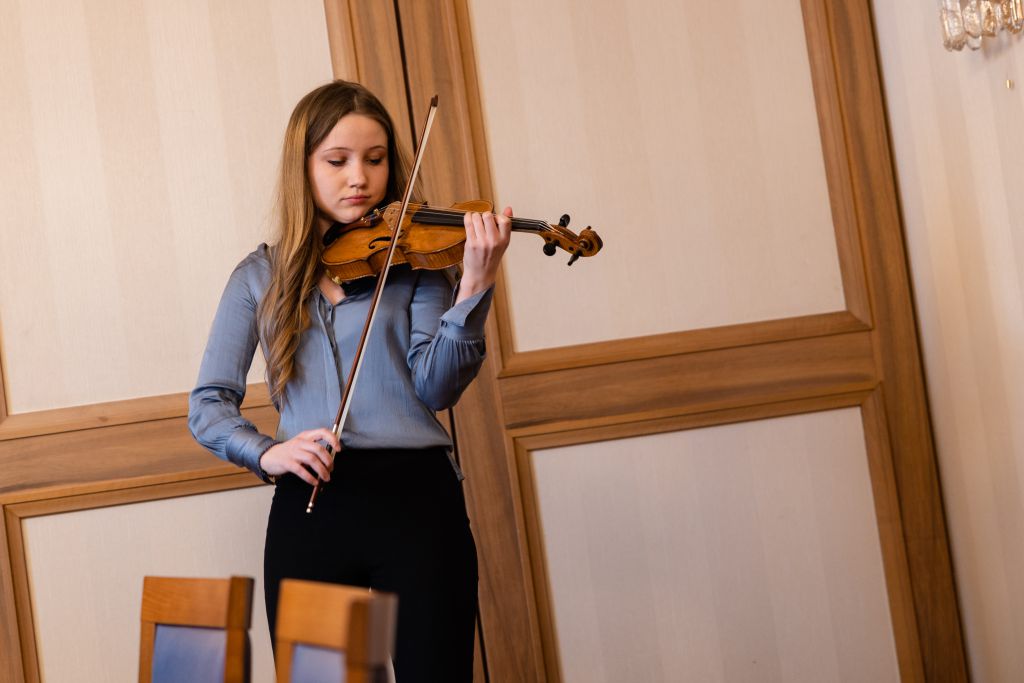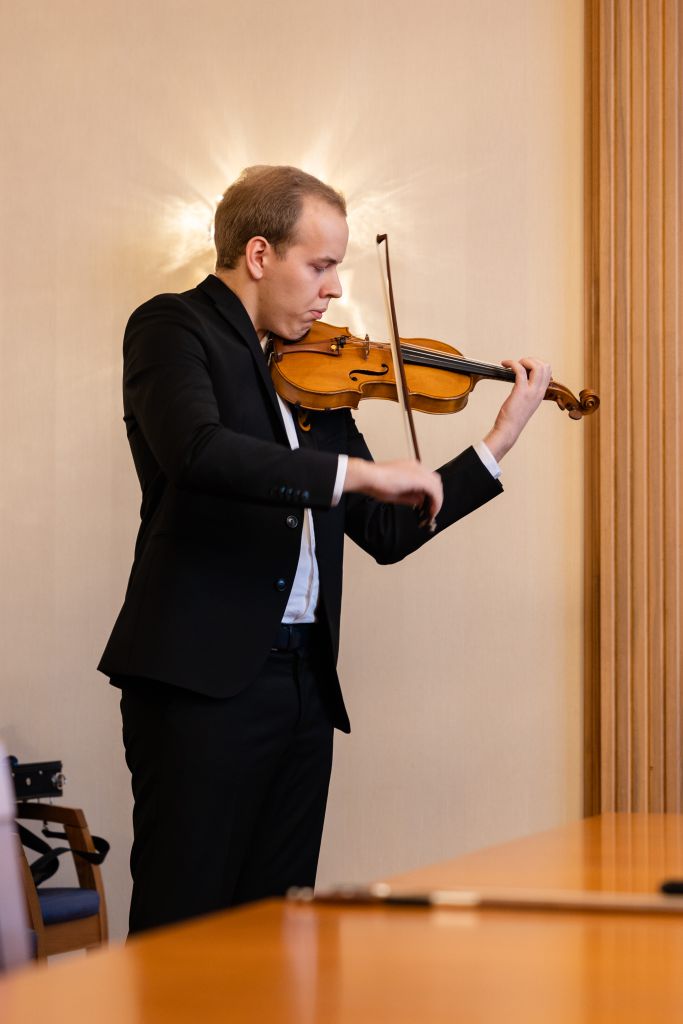Every three years, the Collection of Historical String Instruments of the Oesterreichische Nationalbank (OeNB), the Republic of Austria’s central bank, lends out four high-quality historical string instruments to students enrolled at Austrian universities of music—and since November 2022, two of these instruments have been played on by mdw students Teresa Wakolbinger and David Kessler.

“I feel very honoured to have the privilege of playing the OeNB’s violin by Antonio Gragnani [Livorno, 1779],” says a delighted Teresa Wakolbinger of her new loan instrument. Autumn 2022 saw four outstanding instruments once again lent out to Austrian music students—two of whom study at the mdw. To students, this kind of support is of inestimable value. “On top of how it supercharges my motivation to practice and rehearse, having a violin of such exceptional quality to play on is essential for concerts, recordings, and auditions,” explains Teresa Wakolbinger.

“It’s more important than ever right now to draw attention to yourself, and you can only do that by actually standing out.” Hardly had she played this instrument for a week as its new lendee than she got invited to participate in the Chamber Music Summit at the Künstlerhaus Boswil in Switzerland.
“As the Republic of Austria’s central bank, the OeNB views it as its responsibility to enrich Austria’s cultural landscape,” says Chiara Galbusera, curator of the Oesterreichische Nationalbank’s Collection of Historical String Instruments, of the idea behind this instrument collection.
It’s important to us that these instruments not be stored in vaults but instead be played by musicians and heard in concert halls all over the world.
Chiara Galbusera, curator, Collection of Historical String Instruments, Oesterreichische Nationalbank
The OeNB has been collecting historical string instruments since 1989, when it selected the motif for its first gold coin—the Wiener Philharmoniker. In conjunction with this decision, representatives of the eponymous Vienna Philharmonic made the OeNB aware of how musicians were being priced out of the market where high-quality historical string instruments were concerned, whereupon the Nationalbank quickly decided to undertake its initial instrument acquisitions. Since then, this collection has come to number 45 instruments in all—among them nine violins by Antonio Stradivari, two violins by Giuseppe Guarneri del Gesù, and one violin by the great Tyrolean maker Jacob Stainer. The lendees have been outstanding musicians such as concertmasters and -mistresses of the Vienna Philharmonic and Wiener Symphoniker, and—for around five years now—students studying music at Austrian arts universities. “With the expansion of our support programme to include young and ambitious talents, the OeNB is demonstrating its sense of responsibility when it comes to helping ensure a lively future for up-and-coming string players,” says the mdw professor Wolfgang Klos, who is a member of the programme’s advisory body. Austria’s universities of music employ a rigorous process to select those students who will receive the unique opportunity to launch their careers with instruments that they couldn’t afford at this stage in their lives. Teresa Wakolbinger is acutely conscious of just what such a high-quality instrument means for her career: “It’s important for me, as a student, to establish myself on the market and be perceived as an artist. And to this end, being able to play an instrument from the Nationalbank is definitely a huge help—not least when it comes to getting invited to various master classes and festivals.” To this young student, the special quality of her instrument lies in its sound, which she describes as exceptionally warm and round in its lower register combined with immense brilliance higher up. “The difference compared to my previous instruments is that it takes way less effort to produce different timbres. That makes possible a richer range of tonal colours, and vibrato gets the entire body of the instrument resonating.”

The fact that these special instruments are getting played in concert halls rather than just being admired in display cases is important to the OeNB and an integral part of its concept: “We lend these instruments out to Austrian musicians because their value isn’t just material in nature, but also cultural. And the latter can only be experienced by hearing such musical instruments in a concert hall,” says Chiara Galbusera. “Being able to support Austria’s cultural scene in this way is a great privilege for us.”

